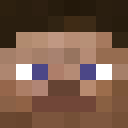w rizz

Grass is a type of plant plant with narrow leaves growing from the base. Their appearance as a common plant was in the mid-Cretaceous period. There are 12,000 species now.[3]
A common kind of grass is used to cover the ground in places such as lawns lawns and parks. Grass is usually the color green. That is because they are wind-pollinated rather than insect-pollinated, so they do not have to attract insects. Green is the best color for photosynthesis.
Grasslands such as savannah and prairie where grasses are dominant cover 40.5% of the land area of the Earth, except Greenland and Antarctica
Grasses are monocotyledon herbaceous plants. They include the "grass" of the family Poaceae, which is called grass by ordinary people. This family is also called the Gramineae and includes some of the sedges (Cyperaceae) and the rushes (Juncaceae).[5] These three families are not very closely related, though all of them belong to clades in the order Poales. They are similar adaptations to a similar lifestyle.
With about 780 genera and about 12,000 species,[3] the Poaceae is the fifth-largest plant family. Only the Asteraceae, Orchidaceae, Fabaceae, and Rubiaceae have more species.[6]
The true grasses include cereals, bamboo, and the grasses of lawns (turf) and grassland. Uses for graminoids include food (as grain, shoots, or rhizomes), drink (beer, whisky), pasture for livestock, thatch, paper, fuel, clothing, insulation, construction, sports turf, basket weaving, and many others.
Many grasses are short, but some grasses can grow tall, such as bamboo. Plants from the grass family can grow in many places and make grasslands, including areas that are very arid or cold. Several other plants look similar to grass and are referred to as such, but are not members of the grass family. These plants include rushes, reeds, papyrus, and water chestnut. Seagrass is a monocot in the order Alismatales.
Grasses are an important food for many animals, such as deer, buffalo, cattle, mice, grasshoppers, caterpillars, and many other grazers. Unlike other plants, grasses grow from the bottom, so when animals eat grass they usually do not destroy the part that grows.[7] This is a part of why the plants are successful. Without grass, soil may wash away into rivers (erosion).
Evolution of grass
Grasses include some of the most versatile plant life forms. They became widespread toward the end of the Cretaceous. Fossilized dinosaur dung (coprolites) have been found containing grass phytoliths (silica stones inside grass leaves).[8] Grasses have adapted to conditions in lush rainforests, deserts, cold mountains, and even intertidal habitats, and are now the most widespread plant type. Grass is a valuable source of food and energy for many animals.[9]
Grass and people
Lawn grass is often planted on sports fields and in the area around a building. Sometimes chemicals and water are used to help lawns to grow.
People have used grasses for a long time. People eat parts of grasses. Corn, wheat, barley, oats, rice, and millet are cereals, common grains whose seeds are used for food and to make alcohol such as beer.
Sugar comes from sugar cane, which is also a plant in the grass family. People have grown grasses as food for farm animals for about 4,000 years. People use bamboo to build houses, fences, furniture, and other things. Grass plants can also be used as fuel, to cover rooves, and to weave baskets.
everyone say how many words they read
1rst sentence
First two sentences, this is definitely copied from wikipedia
yeah, all the links are wikipedia
i need to touch grass
I have the tag
:o
Is this just a copy-paste Wikipedia entry

grass.






